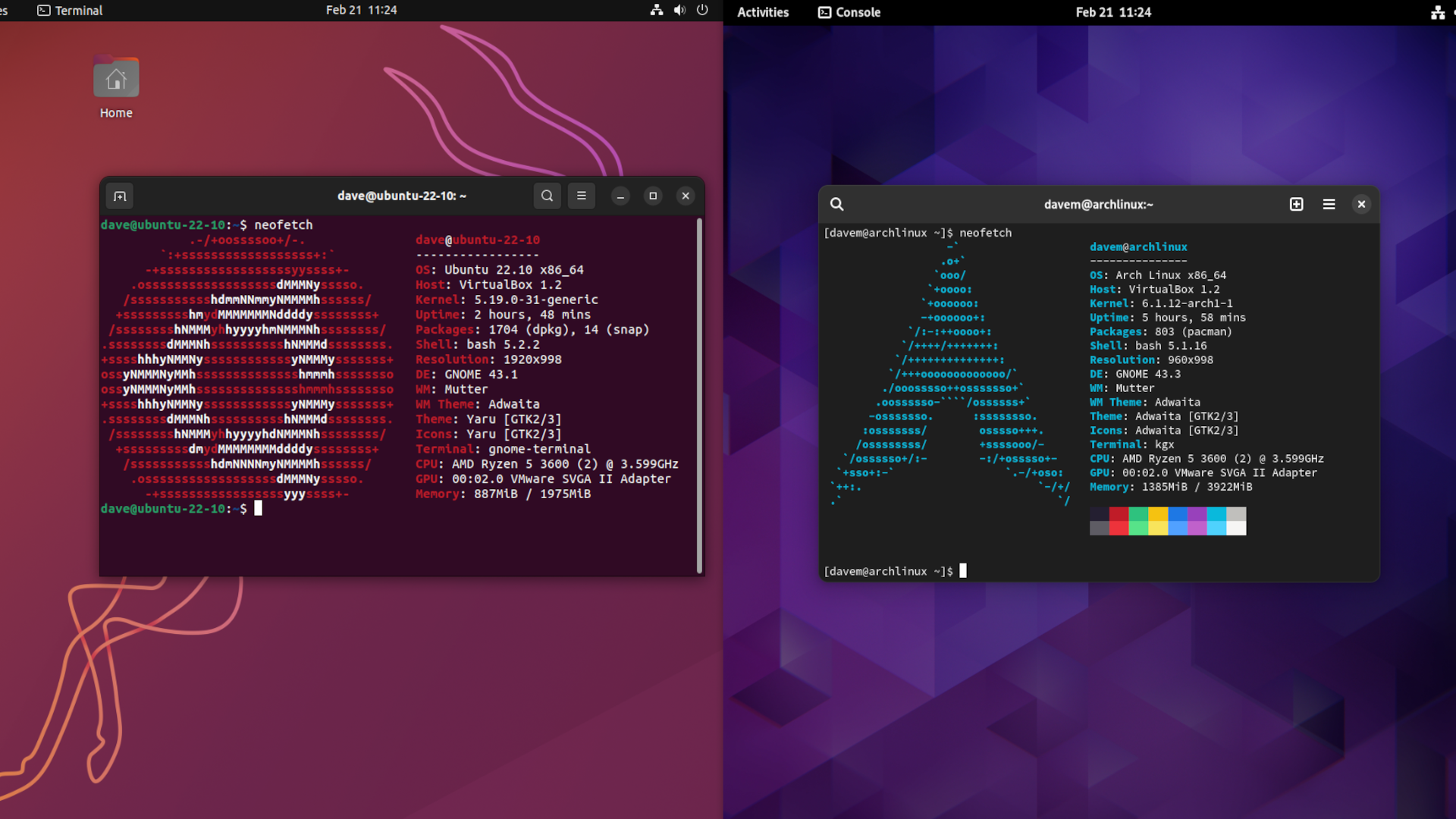Arch Linux vs. Ubuntu: A Comparison for Advanced Users

Introduction

Arch Linux and Ubuntu are two prominent Linux distributions that cater to different user needs. Arch Linux is renowned for its bleeding-edge software and highly customizable approach, while Ubuntu emphasizes ease of use and stability. For advanced users seeking a deeper understanding and control over their systems, comparing these two distributions is crucial.

Package Management and Updates
Arch Linux utilizes the Pacman package manager, known for its simplicity and speed. Users interact directly with repositories, allowing granular control over package installations and updates. The distribution follows a rolling release model, providing continuous access to the latest software. Ubuntu, in contrast, uses the apt package manager. It employs a stable release model, delivering comprehensive software updates less frequently to ensure system stability.
Customization and Configuration
Arch Linux is a highly customizable distribution. Users are responsible for installing and configuring their systems from scratch, following the Arch Wiki (a comprehensive documentation database). This approach grants extreme flexibility and control but requires a high level of technical knowledge. Ubuntu, on the other hand, offers a user-friendly graphical installer and a wider range of pre-installed software. It provides a more out-of-the-box experience but limits customization options to a certain extent.
Hardware Compatibility
Arch Linux supports a wide range of hardware, including laptops, desktops, and servers. Its lightweight nature and focus on customizability make it suitable for various hardware configurations. Ubuntu has a wider hardware compatibility scope, with certified hardware vendors and comprehensive support for peripherals like printers and webcams.
Security
Both Arch Linux and Ubuntu prioritize security. Arch Linux’s rolling release model ensures continuous security updates, while its AUR (Arch User Repository) allows access to user-submitted packages. Ubuntu, with its stable release model, undergoes rigorous testing and security audits before releasing updates. It also offers enterprise-grade security features like AppArmor and SELinux.
Conclusion
Arch Linux and Ubuntu cater to different audiences and usage scenarios. Arch Linux empowers advanced users with unmatched customization and control, but its steep learning curve may not suit beginners. Ubuntu strikes a balance between ease of use and stability, making it a more accessible option for both初心者and experienced users alike. The choice between the two depends on individual requirements and technical proficiencies.

It is a misleading article, Ubuntu is very easy to use, and it is a good option for both beginners and advanced users.
The article is well-written and informative, it provides a lot of useful information for both Arch and Ubuntu users, anyways, some tables are missing.
I’ll only use Arch, Ubuntu is poor.
Arch is the best, but the installation process could be easier…
lol, this isn’t a comparison, Arch is not for everyone
Finally someone talking about the real differences between Arch and Ubuntu, I was waiting for this article since last year.
This article is clickbait, it doesn’t provide any real value to the reader.
the best article I have seen this year, it clarifies the differences between Arch and Ubuntu in a simple and objective way.
I think that the author should provide more examples and benchmarks, the article is too theoretical.